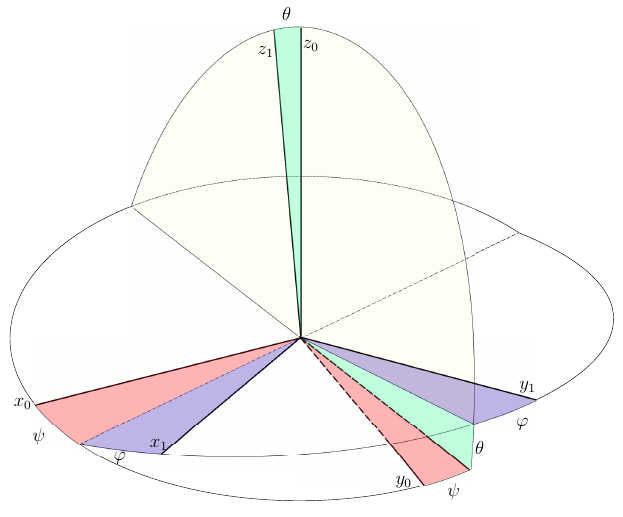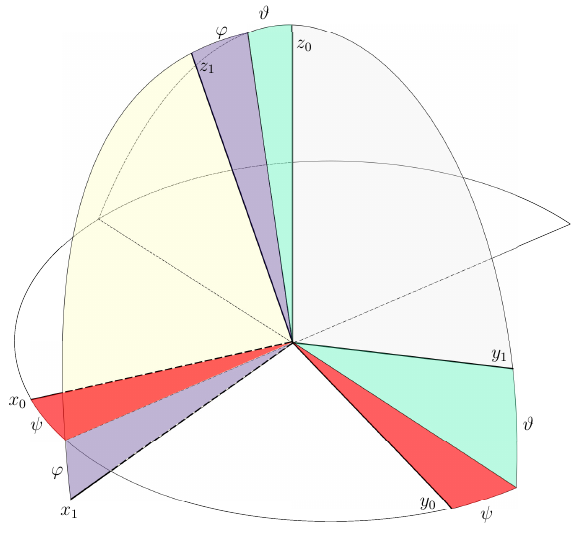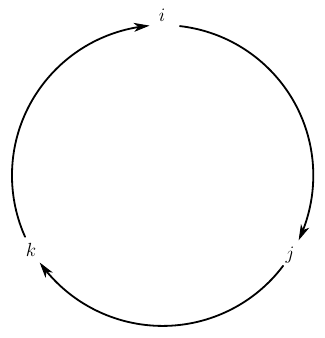The Magic of Tensor Algebra: Part 12 - Rodrigues-Hamilton Parameters in Solid Kinematics
Content
- What is a tensor and what is it for?
- Vector and tensor operations. Ranks of tensors
- Curved coordinates
- Dynamics of a point in the tensor representation
- Actions on tensors and some other theoretical questions
- Kinematics of free solid. Nature of angular velocity
- The final turn of a solid. Rotation tensor properties and method for calculating it
- On convolutions of the Levi-Civita tensor
- Conclusion of the angular velocity tensor through the parameters of the final rotation. Apply head and maxima
- Get the angular velocity vector. We work on the shortcomings
- Acceleration of the point of the body with free movement. Solid Corner Acceleration
- Rodrig – Hamilton parameters in solid kinematics
- SKA Maxima in problems of transformation of tensor expressions. Angular velocity and acceleration in the parameters of Rodrig-Hamilton
- Non-standard introduction to solid body dynamics
- Non-free rigid motion
- Properties of the inertia tensor of a solid
- Sketch of nut Janibekov
- Mathematical modeling of the Janibekov effect
Introduction
Finally, we come to a rather interesting topic - the choice of parameters that uniquely determine the orientation of a solid body in space. Historically, the most popular are the angles of rotation - they are primarily mentioned in the classic textbooks of theoretical mechanics.
')

Fig.1. Euler angles are parameters that are familiar to anyone who was involved in computer graphics and modeling of the spatial motion of bodies. And everyone whom they know knows how problematic their use is.
Usually, the rotation angles are used in conjunction with the Cartesian coordinate system, while they say that the associated coordinate system can be combined with the base by three consecutive turns around its axes. Moreover, each next turn is carried out around the axis obtained after the previous turn. In addition, the next turn should not occur around the axis about which the previous turn was made. In this regard, there are 12 different combinations of rotation angles, the most famous of which are Euler angles (Figure 1). Basic coordinate system is rotated
The use of Euler angles is good for everyone - their number coincides with the number of rotational degrees of freedom of a rigid body, which means they do not generate redundant constraint equations. But, even without resorting to cumbersome formulas, in Figure 1, one can guess where the problem lies.
Fig. 2. Famous Euler kinematic equations. I, in due time, took a sip with them of long and painstaking debugging
There are two values of the nutation angle at which the degeneracy of the Euler kinematic equations occurs (Figure 2) -
NaN in phase coordinates. Sailed, the integration procedure collapsed.Another option for turning angles is plane angles:

Fig. 3. Aircraft angles - one of the practical ways to determine the orientation of the aircraft in space
These turning parameters degenerate when the pitch
All possible combinations of angles of rotation have a degeneration. For modeling and laying in the algorithms of orientation control systems, their area of application is limited to critical parameter values. In the last article, we showed that the final rotation parameters are not suitable, and the use of the components of the rotation tensor is impeded by the excessively deep dependencies between them, which gives rise to a high order of the system of equations of motion.
However, the great Leonard Euler introduced into consideration four parameters that do not have degeneration. The then scientific world did not pay special attention to its publication on this issue. This idea, independently of Euler, was developed by Olide Rodrigue, and in the works of William Hamilton received a final theoretical justification. Meet -
1. Quaternions and actions on them
Quaternion is the number of the form
Where
So, the multiplication of quaternions is reduced to the algebraic operation of multiplying the sums, with the only difference being that it is required to determine the rules for multiplying imaginary units. Traditionally, each of the imaginary units squared gives -1
and their pairwise works are well described by the diagram.

Fig. 4. Multiplication diagram of imaginary units in a quaternion
the meaning of which is simple - if you multiply pairs of imaginary units in the order indicated by the arrow, you get the third imaginary unit with the "+" sign. If the order of multiplication is reversed, the third imaginary unit with a "-" will be obtained. Does not resemble the rule of vector multiplication of orts in Cartesian coordinates? This is it, that is, we get
Using these rules we multiply two quaternions
Wow! Not weak, but we boldly quote similar terms.
and, well, surely you see here painfully familiar actions on vectors. Let our vectors be given
then each quaternion can be represented by a scalar-vector pair
and the result of their multiplication
It is not difficult to simply compare this formula with the result of the multiplication that we have performed, while considering the imaginary units as the ortami of the Cartesian basis. Thus, quaternions include both vectors of three-dimensional space, and for example, quaternions of the form
And the quaternions of the form
gives a scalar, with a minus sign, and the vector product of the vectors making them.
Due to the presence of the product of vector multiplication, the multiplication operation of quaternions is not commutative
Well, is it necessary to say that by zeroing the last two coefficients of each of the quaternions we get the product of complex numbers? I think it is not worth it, because we are not immersed in a complex area, and if we are talking about complex numbers, then where it is required.
I will not begin to say that adding quaternions and multiplying them by a number is similar to the corresponding operations in the complex field. But what should I talk about, so about the conjugation of quaternion
about the associated norm calculation operation
and operations for calculating the inverse quaternion
And one more useful property concerning the conjugation of the product of quaternions
In addition, the norm of the inverse quaternion is the reciprocal of the norm of the original
These operations are directly related to the fact that today we use hypercomplex numbers.
2. Quaternion as a linear rotation operator
Now let's look at this trick. Let be
View conversiondoes not change quaternion norms
.
This statement is verified by direct calculation.
Indeed, the quaternion norm does not change with such a transformation. And if the quaternion
The value in parentheses is called the monogram (not to be confused with the tensor!) Of the quaternion. We exercise on its vector part
No one bothers to do equivalent transformations to us, so we make them. Now we introduce a replacement
On what basis? Yes, the fact that the sum of squares of these quantities always gives one, and if this is the case, then no one bothers to present these values as the sine and cosine of a certain angle. Why divide the angle by two? We so want, then it will be useful to us, because the angle can be arbitrary. Based on the introduced replacement, we can rewrite the quaternion in the form
Note that the vector
On top of that, let's allow ourselves another assumption - let the quaternion be a single, that is,
Now accurately perform the orthogonal transformation over the vector quaternion
Now multiply the result (2) by the inverse quaternion
In order not to overload the text with “crocodiles”, we will calculate scalar separately.
and the vector part
conversion result. Finally, on the basis of formulas (3) and (4), having carried out not complicated trigonometric simplifications, we come to the conclusion that the output is some vector
So this is ... Rodrig's final turn formula! It turns out that the transformation
which, given that for a single quaternion, the operation of calculating the inverse quaternion is equivalent to conjugation, can be rewritten as
is equivalent to rotating the vector around the axis defined by the ort
findings
We have seen that the unit quaternion, whose components are constructed by the formulas
determines the final turn. The four parameters that we have quoted are the very parameters of Rodrigues-Hamilton, which uniquely determine the orientation of a solid body in space and do not degenerate at any parameters of rotation. For example, if we zero the rotation angle, then the orth of the rotation axis will also be equal to zero. When turning at any end angle, we can always calculate the position of the axis of rotation.
Well, in the meantime outside the window it dawned ... The plan of this article was somewhat different, and we did not say a word about tensors. Yes, it is for the better, but now we have a clear idea that we will use it for further cunning orientation parameters.
Thank you for attention!
To be continued...
Source: https://habr.com/ru/post/263533/
All Articles